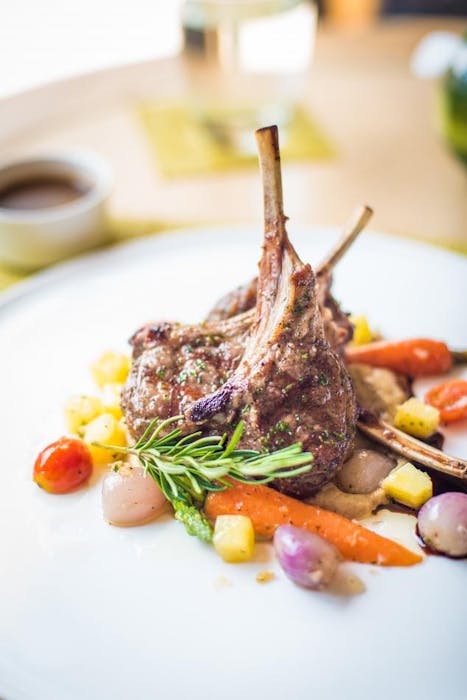 Back
Back
5 Reasons to Eat Bone in Meat
Welcome to 2018, bone broth is all of the rage, saturated fat is known to be important to our health, and yet many people are still nervous to cook with bone-in meat. Although cooking with bone-in meat might seem complicated, it truly is not, and the benefits far out weigh any reasons not to. So here are 5 simple reasons to opt for bone-in cuts of meat more often than not.

If you lived through the 80s, 90s, and early 2000s the idea of cooking bone-in, not to mention skin-on, meat was practically unheard of. Bone-in meat was almost seen as barbaric, extremely unhealthy, and to be avoided as the common concusses was that in order to eat well you needed to eat the leanest cuts of meat possible. Fast forward to 2018, bone broth is all of the rage, saturated fat is known to be important to our health, and yet many people are still nervous to cook with bone-in meat. Although cooking with bone-in meat might seem complicated, it truly is not, and the benefits far out weigh any reasons not to. So here are 5 simple reasons to opt for bone-in cuts of meat more often than not.
1. More Micronutrients
Bones are in fact living tissues, much like the meat that we eat, and are therefore rich in vital micronutrients for our bodies. Bone is full of minerals, mostly calcium and phosphorus, along with sodium, magnesium, and other trace important minerals. It is these trace minerals that provide the oh-so-popular bone broth with its nutritional highlights, however these same nutrients are accessible in bone-in cuts of meat, especially when braised or cooked in stews. Bones also contain bone marrow, a fatty substance that is extremely nutrient dense and considered one of the original “superfoods”, that is released into the meat during the cooking process, amplifying the meats nutrients density.
2. Supports Gut Healing
In addition to trace minerals, one of the biggest benefits of animal bones are their high concentration of collagen, gelatin and glycine. These nutrients are important for gut health, which is a major factor in the health of our immune system, as well as help to reduce inflammation in the body (check out our other blog for more info). Although these nutrients are becoming increasingly popular in supplement forms (i.e. collagen powders), using the most whole food version will always provide the most benefits. If you are looking for alternative ways to get these nutrients, you could always start with a premade bone broth or make your own.
3. Supports Sustainability
When it comes to eating meat, an ethical argument can be made for eating the whole animal. Although it might be convenient to buy boneless meat, using bone-in (and skin-on) meat actually helps to ensure that you are using more of the animal with less waste. It might take a little research, but there is a lot you can do with the ‘odd’ cuts of meat, including bones and organs, not to mention the nutritional benefits listed above.
4. Adds Flavour
There is a very old saying that says ”the nearer the bone, the sweeter the meat”. Not only do bones add nutrition, but they add a ton of flavour in the cooking process as well. When you cook meat on the bone, the marrow and other substances from the bones actually flavour the meat, adding a depth of flavour that does not exist with a boneless cut. Although bone-in cuts do take longer to cook, it is well worth the wait for a more succulent and juicy cut of meat.
4. Saves Money
Comparatively speaking, bone-in meat is often slightly less expensive than boneless cuts, so opting for them can help save a little money as well. Many people tend to see bones as a waste and will therefore pay more for boneless cuts, however the reality is bone-in meat, like bone-in skin-on chicken breasts, bone-in skin-on chicken thighs, whole chickens, etc is where you get the more bang for your buck, both in your bank account and in your health.
Article By:
Stephanie Kay Nutrition
Posted on
August 10th, 2023







